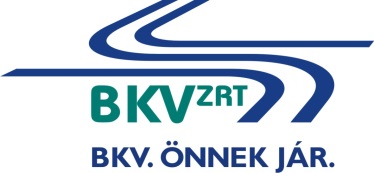Chronicle of the underground rapid transit lines in Budapest
The Millenium Underground Railway, metro line M1
Metro line M1 is the first underground railway on the continent and the fastest-built metro line worldwide, since the complete reconstruction took only two years. The inauguration took place on the 2nd of May, 1896.
6 years before the Millennial in 1894, there was a huge series of festivities and exhibitions in Városliget (City Park). There was an increasing need from the public on how to transport large number of visitors to these areas through Andrássy boulevard – where the upper class citizens of Budapest lived. The Budapest Közúti Vaspálya Társulat (predecessor of nowadays BKV and BKK) initiated the building of an underground railway system. Their offer received acceptance with two conditions: meeting the deadline of the construction for the beginning of the Millenial in 1896 and for the appropriate ways of decorating the stations. For the trust from the decision-makers the company promised to build an underground railway the most modern on the continent, which will also provides Budapest the fame she deserves. In order to meet the deadline, the Interior Minister even granted Sundays as workdays. The latest techniques were used in the construction of the tunnel. The crossings above the surface-part of the line were the first ones in Hungary where reinforced concrete was built in. As for the stations themselves cast iron was used for the decoration as well as tin and Zsolnay majolica – this latter for the roof part. The interior of the trains was made of wood mostly and there were two rows of seats, one on each side.
Subways
„In Budapest a rapid transit system must be built. The structure of the lines is the following: two diagonal (eastern-western, northern-southern) and one main line connecting these two in a circular way…”
Excerpt from the Cabinet’s decree of 2018/1950 in 1950 September the 17th. which enacted the construction of a new metro line.
Metro line M2 (east-west line)
The construction of the east-west line, commonly known as metro line M2 began in 1950 with 8 stations, between Népstadion (now Puskás Ferenc Stadion) and Déli pályaudvar with a length of circa 7,8 km. The construction was halted by the government in 1954. Up until that time 40% of the tunnel and the public utilities was built as well as two Hungarian-made train (Ganz) operated on the line and a prototype of an escalator was built. For 10 years the whole construction site was at stalemate, with only preservation works. The economical plan for the continuation of the construction was introduced in 1963, furthermore arrangements were made for a new north-south line. On metro line M2 the new terminus was modified towards Örs vezér tere because of the increased number of passengers expected and a new station was constructed at Astoria. The Pillangó utca station made least, thus the line put into operation in its full length in 1972 December the 23rd.
Metro line M3 (north-south line)
The building documentation and the track plans of the north-south (more precisely the northern-southeastern), commonly known as metro line M3 – was made in 1966, on its first intention to connect Újpest István tér and Kispest Vörös Csillag Traktorgyár. Finally the southern terminus was modified to Kispest Határ út with a construction deadline to the end of 1985 with 19 stations and 14,8 km length total. The project was approved by the government in 1968, construction works began in 1970 and without pause they lasted until 1990. Meanwhile the southern terminus was modified again to Kőbánya-Kispest, with the total length of 17,3 km.
Metro line M4 (South Buda – Rákospalota line)
Plans for building the fourth line came up in 1972 with the intention of connecting Budafok with Astoria through Kálvin tér. The decision for beginning the construction was made in 1976. The project was later postponed. The city council of Budapest accepted the track plan and the necessary documentation for tender procedures in 1991 May the 16th. The feasebility study was completed in 1996 and negotiations started between the Hungarian government and the European Investment Bank (EIB) for financing the project. In 1998 the government announced that it doesn’t want to participate in the construction. Finally in 2003 the government and the city council agreed on the construction of metro line M4, between the two terminuses: Kelenföldi pályaudvar and Keleti pályaudvar. The foundation stone was laid in March 2006 at Etele tér. The line opened for the public on 2014 March the 28th with 10 stations and a total length of 7,4 km.







